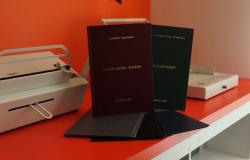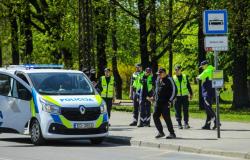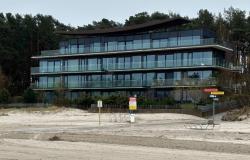The new building of the Seaside Open Air Museum in Ventspils is opening its doors
The new exposition with various objects and digital solutions reveals the 19th-20th century. The everyday life of the inhabitants of the Kurzeme coast in the 19th century, the life of Latvian and Libyan fishermen and farmers, as well as the heyday of the fishermen’s collective farms. There was also an exposition about the nature of Northern Kurzeme.
The new building and exposition of the Maritime Open-Air Museum is opened not by cutting the ceremonial ribbon, but by welding a giant chain to the anchor, thus symbolically confirming that the ship has anchored.
Architect Ija Rudzīte reveals to Latvijas Radio the general image of the building built for the museum, which resembles a shipwreck, while the wooden details depict boats and their patterns.
“It’s the seaside, boats, ships – these are values, associatively like an open-air museum in Riga; they are folk articles, a tree. The idea was born that just like anchors are assembled, when walking towards the sea along the path, an ancient wreck with a different luster should moor here . That’s how the idea of a metal wreck of an old ship, stuck here for life, came about.”
The new Seaside Open Air Museum in Ventspils.
Photo: Inga Ozola / Latvian Radio
The content side of the museum and the exhibition “By the sea and on the land” were created by “Dd studio” together with cooperation partners and Ventspils museum specialists. Their first work at the beginning of the 2000s was the Ventspils Museum in the Palace of the Livonian Order, but now the Seaside Open Air Museum. It was a different time and the first digital opportunities, which museums did not have before, says Jānis Mitrēvics, creator of the exposition of SIA “Dd Studio”:
“It was a pleasure to return to Ventspils once again. This time the task was different, to create an exposition where, of course, digital media are used. Our philosophy is that the digital miracle should serve the revelation of content. Modern life is unimaginable without digital, but at the same time it has to be in the background, it has to be an assistant.”
The new Seaside Open Air Museum in Ventspils.
Photo: Inga Ozola / Latvian Radio
It complements the various ancient more than 300 museum objects related to the life of coastal people – fishermen and farmers – by the sea in the 19th and 20th centuries, starting with farmsteads, Libyans and Latvians, fishermen’s big boots and hooks, fish smokers and other trades. also animations or, for example, a digital screen, which serves the story of the presence of the Soviet army in the sea, Jānis Mitrēvics tells about the “Closed zone” section: “The sand breaks off, then you can get additional information about those Soviet affairs. Here is the seashore, which every in the evening, so that you can see what is happening on the shore. There are border guards, information about what it looked like and what happened on the seashore.”
Armands Vijups, deputy director of the Ventspils Museum, leading researcher, says: “This is what the museum’s collection rooms should look like in every museum, we are happy that we have exactly such.”
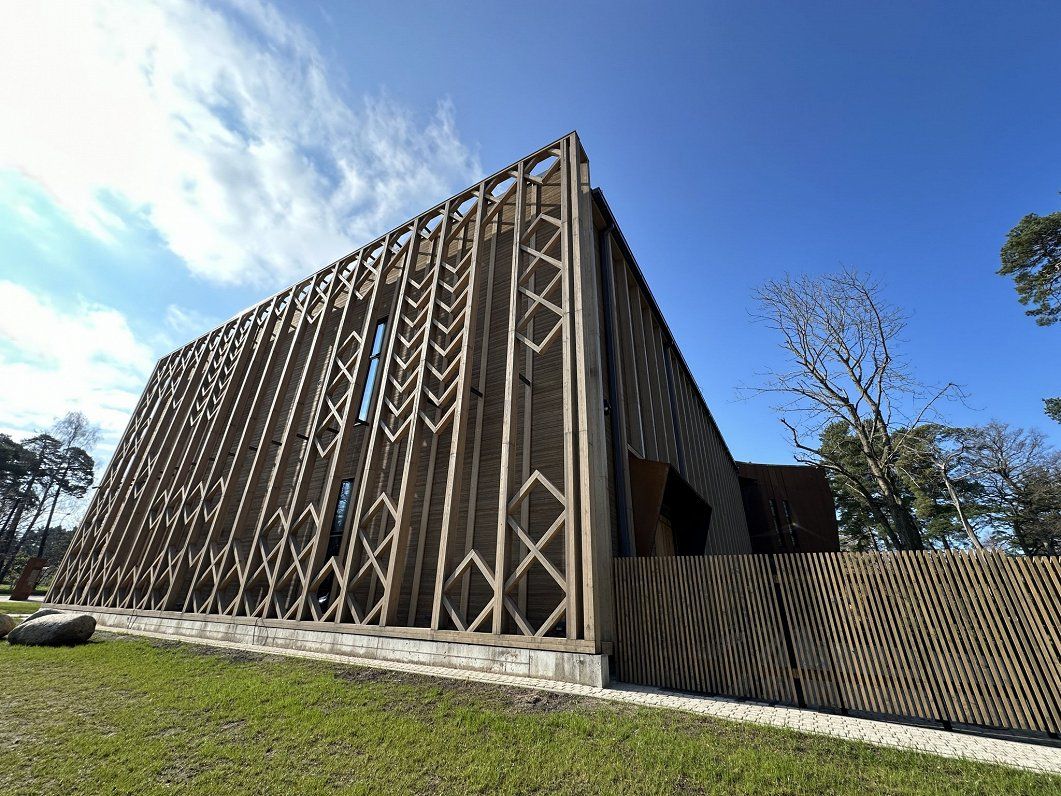
The new Seaside Open Air Museum in Ventspils.
Photo: Inga Ozola / Latvian Radio
In the new museum building, visitors will be able to partially look into the museum collection through the glass windows. “One part of the 2,600,000 items, it’s what visitors don’t usually see, what museum people see. The collection that’s for research, for exhibitions, for new, permanent displays, it’s all stored here or will be stored. It’s still being moved from temporary locations. Everything the ethnographic collection – thousands of objects will move from the palace,” said Armands Vijups.
The Deputy Director of the Ventspils Museum is pleased to show the new museum premises, stressing that one of the essential values of the new museum is the right premises and conditions for the storage of the museum’s collection, to which the largest part of the museum building is allocated.
The director of the Liepāja Museum, Dace Kārkla, also welcomes the implementation of such a project with the support of the municipality: “We are still dreaming of the Liepaja Maritime Museum, it is a great pleasure that the Ventspils colleagues have managed to implement part of their idea, we are very happy about it. There is a very good exposition, the museum has acquired modern storage facilities, which I think is a great achievement. It is a great understanding from the city management that the cultural heritage of the city is located in very good and modern storage facilities.”
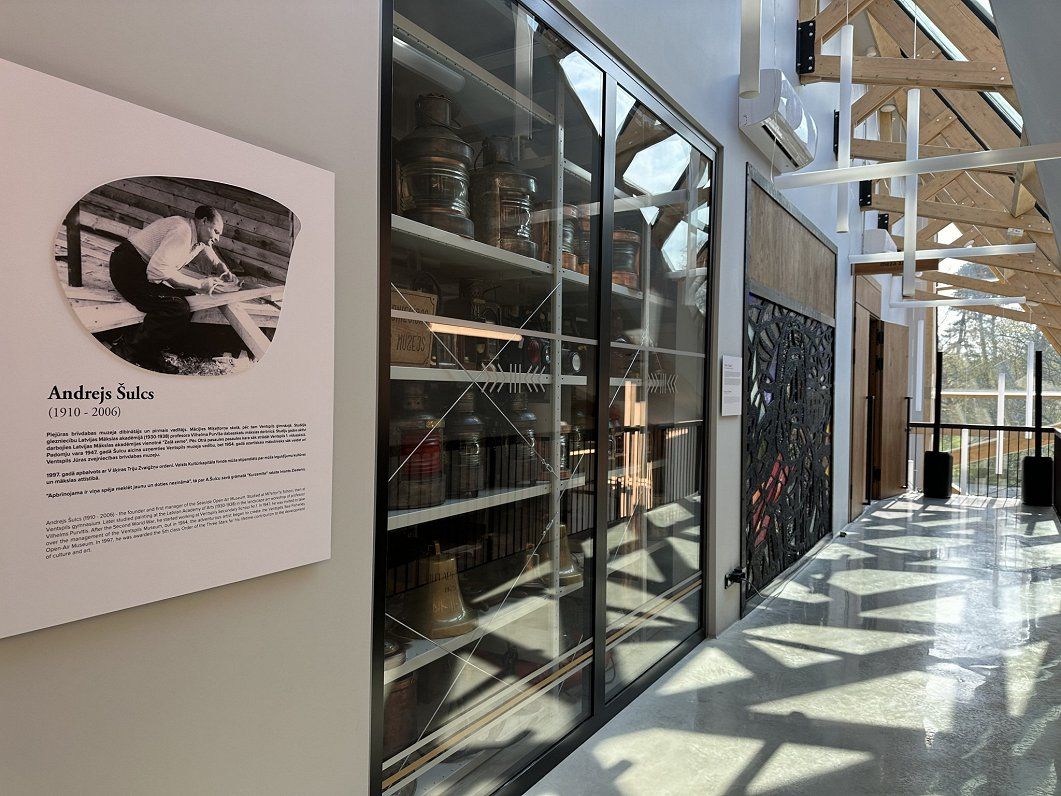
The new Seaside Open Air Museum in Ventspils.
Photo: Inga Ozola / Latvian Radio
However, the implementation of the project itself over more than six years has not been easy. Corrections were introduced by the Covid-19 pandemic, Russia’s invasion of Ukraine, the contract with the previous builder had to be terminated, but two more procurement procedures were carried out in order to continue the construction work on the building. But now the difficult and challenging work is done, says Artūrs Tukish, head of the Seaside Open Air Museum:
“Not only the employees now have better conditions, for the restoration and the collection itself, but the added value is the exposition, which is connected to the exposition part that is outside, the museum is 4.5 ha large, still small with a 5 km track, this whole farm, the complex is quite cleverly put together.
For people who have an understanding of cultural-historical values, it will be a unique place in Latvia, where the historical, ethnographic and modern are combined together at the same time. It’s day versus night,” says Artur Tukish.
Solvita Údre, director of the Ventspils Museum, remembers how the museum’s employees have worked until now: “As colleagues of the open-air museum worked before, my heart ached. The previous building was built of plywood, covered with slate, hands and feet were frozen in winter, the water was frozen, the restorers had the ice has to melt in order to start working. It is very important to me that the employees have good working conditions.”

The new Seaside Open Air Museum in Ventspils.
Photo: Inga Ozola / Latvian Radio
Using modern equipment and a magnifying glass, metal restorer Līva Ķemere carefully cleans the dust from the parts through which the threads in ancient looms were worth: “Very powerful equipment. Everything is mostly new, extractors, magnifiers, lamps, everything is new.”
It is a big event not only in the history of the museum, but also in the history of the city of Ventspils, says Stella Lindenberga, Head of the History Department of the Ventspils Museum: “Because a new museum, a building specifically for the needs of the museum, nothing like this has been experienced for decades. Employees even have the opportunity to work in such conditions in a known degree.”
In the new building of the Seaside Open Air Museum, the sounds of nature can now also be heard, thus creating the presence of a forest. In the exposition, space is allocated to the nature of Northern Kurzeme, birds, animals and plants.
The new museum building is part of the large-scale project “Cultural-historical and natural heritage preservation, exhibition and development of the tourism offer of Northern Kurzeme”. In 2018, a contract was signed with the Central Finance and Contracts Agency for the implementation of this project. From Ventspils to Kolka, various projects worth more than 7.3 million euros have been implemented.
Tags: building Seaside Open Air Museum Ventspils opens doors Article
-





